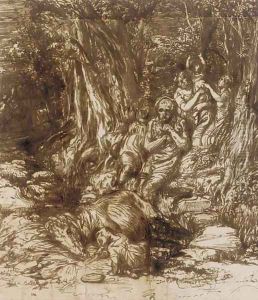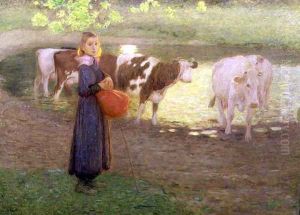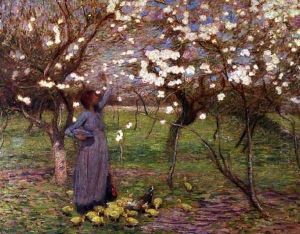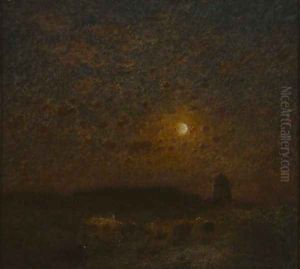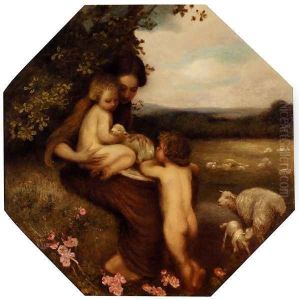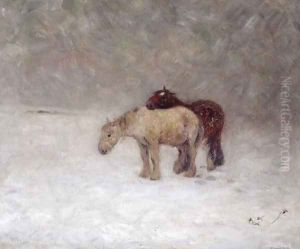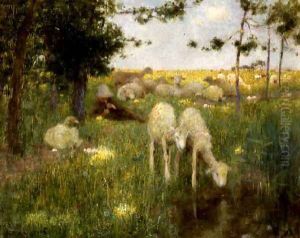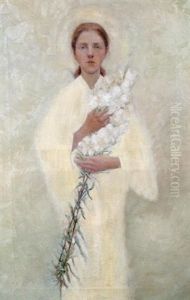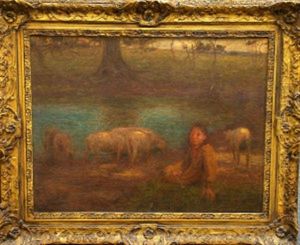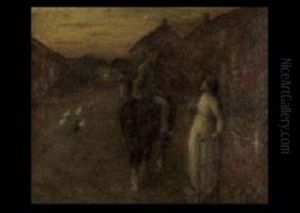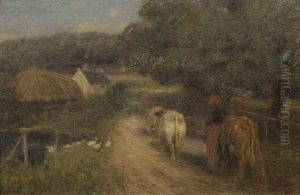Edward Stott Paintings
Edward Stott was an English painter known for his atmospheric landscapes and scenes of rural life. Born on March 29, 1859, in Rochdale, Lancashire, Edward Stott was inclined towards the arts from an early age. He studied at the National Art Training School, South Kensington, and later in Paris under the tutelage of Carolus-Duran, who also mentored notable artists such as John Singer Sargent.
Stott's early work reflected the influence of the French rural naturalism, particularly the Barbizon School, which emphasized painting directly from nature. His palette was often subdued, and he was adept at capturing the subtle variations of light and atmosphere in his landscapes.
By the turn of the century, Stott had developed a distinctive style characterized by a soft-focus approach and a generally muted color scheme, which earned him the nickname 'the poet-painter of the twilight.' He was particularly fascinated with the effects of dusk and dawn and often depicted scenes of rural life bathed in the warm glow of the setting or rising sun.
Throughout his career, Stott exhibited regularly at the Royal Academy and was elected an Associate of the Royal Academy (ARA) in 1906, and a full Royal Academician (RA) in 1914. Despite his success, he remained a private man and spent much of his life in the small village of Amberley in West Sussex, where he drew much of his inspiration from the surrounding countryside.
Edward Stott died on September 21, 1918, leaving behind a legacy of work that celebrated the quiet and contemplative aspects of the English landscape. His paintings, though not as widely known today as some of his contemporaries, continue to be appreciated for their serene beauty and masterful depiction of light.



